
京都で芸者体験、舞妓体験 SADOO
| 代理店様 |
|---|

| 代理店様 |
|---|
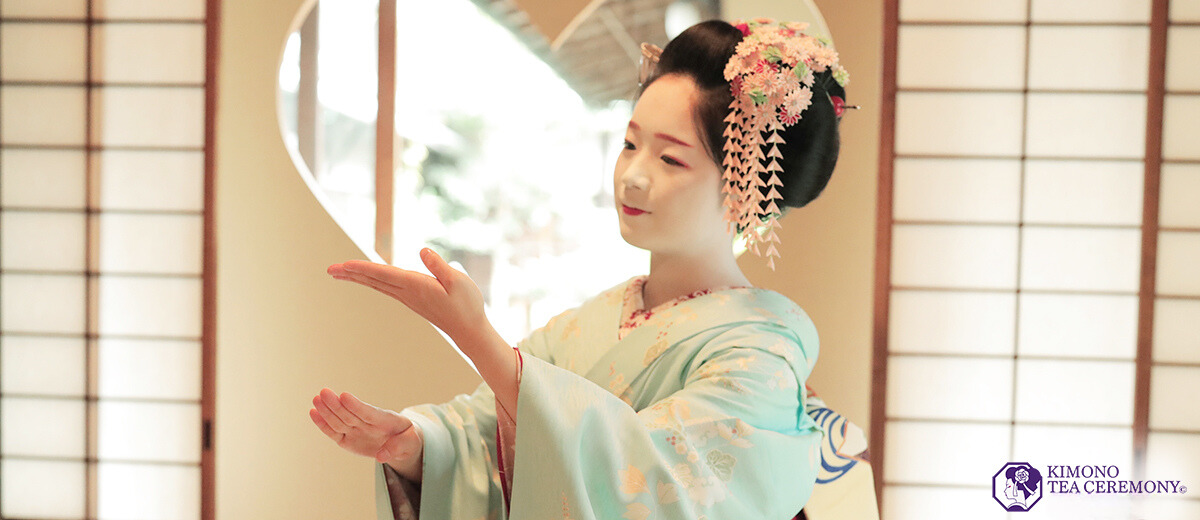
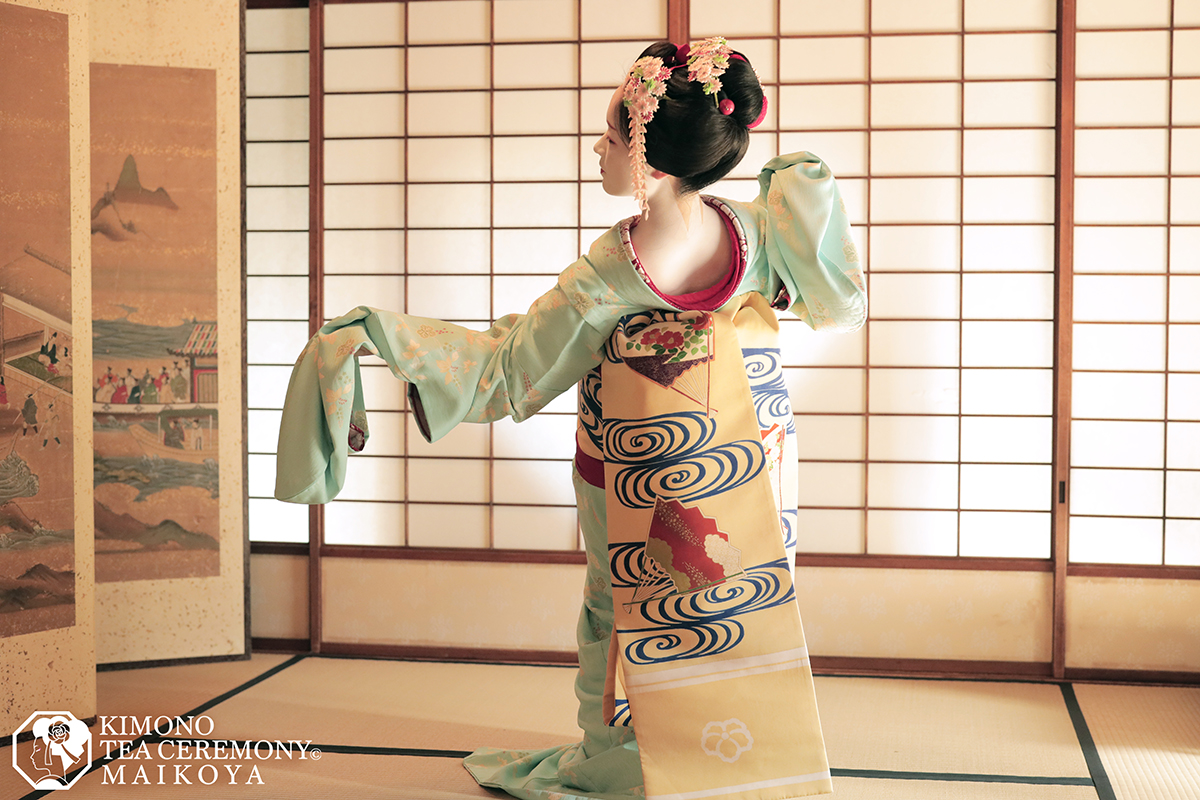
舞妓さんや芸妓さんが貸切であなたのために踊りを披露し、お茶会体験を行うプライベートプランです。お客様自身の着物へのお着替えもプランに含まれています。。
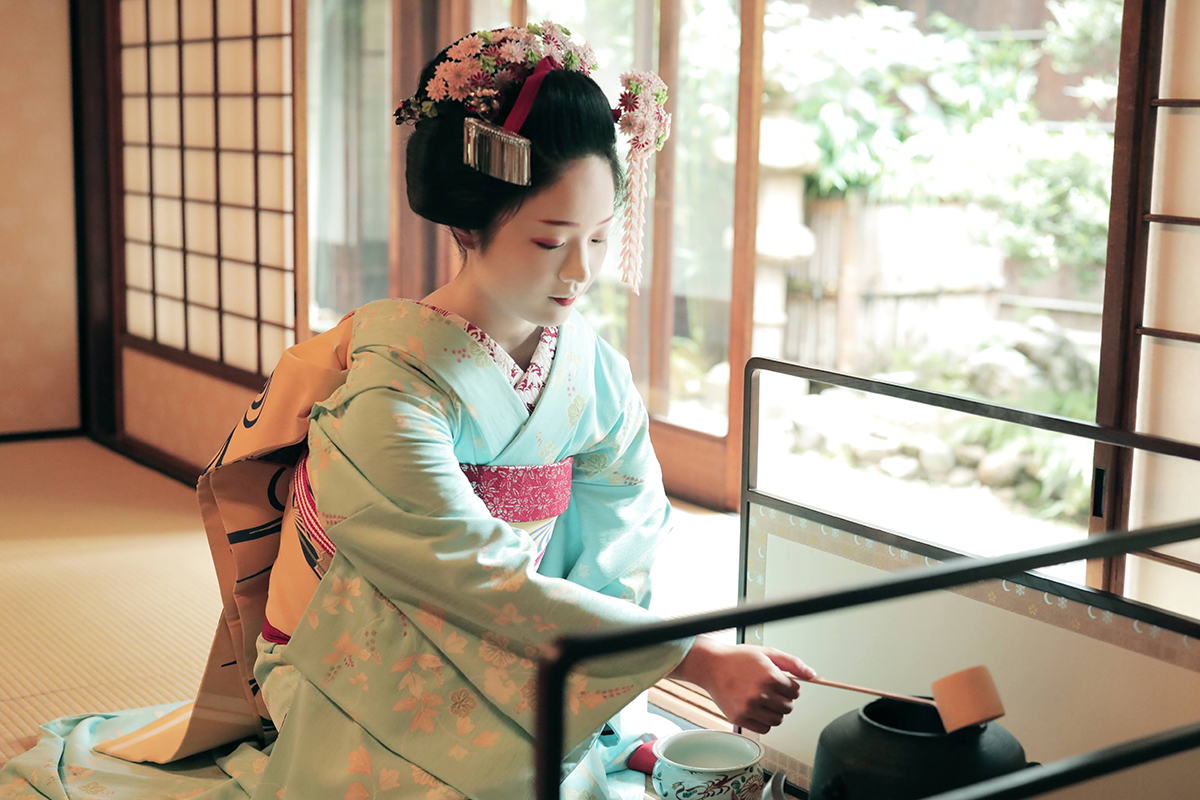
舞妓茶道体験に参加することで、舞妓さん(または芸妓さん)と交流し、この特別な文化に触れることができます。舞妓さんが美しい所作でお手前を披露し、抹茶を飲みながらお茶菓子を楽しみ、お話ししましょう。また、舞の鑑賞もできますし、舞妓さんとの記念写真もお忘れなく。SADOOでは、祇園京都で毎日舞妓さんとのお茶会体験を開催しています。
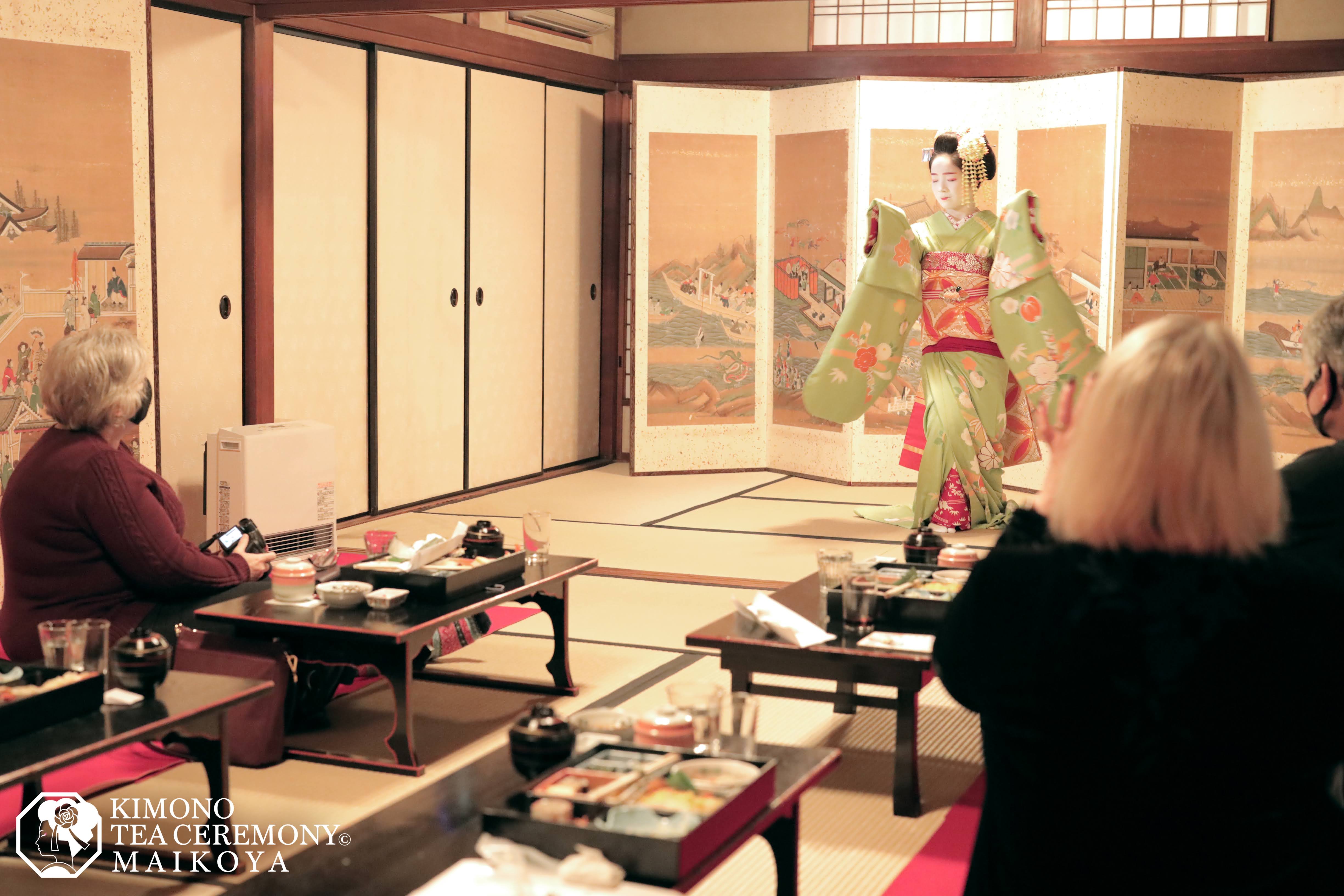
京都観光の締めくくりに、美味しい食事を楽しみながら、舞妓や芸妓さんの伝統的な舞を鑑賞してみませんか? 京都では、いくつかの芸者ディナーショーがあり、その多くは祇園エリアやその周辺で開催されています。お食事と舞の鑑賞を楽しんだ後は、舞妓・芸妓さんへの質問タイムや、お座敷遊びを体験することもできます。
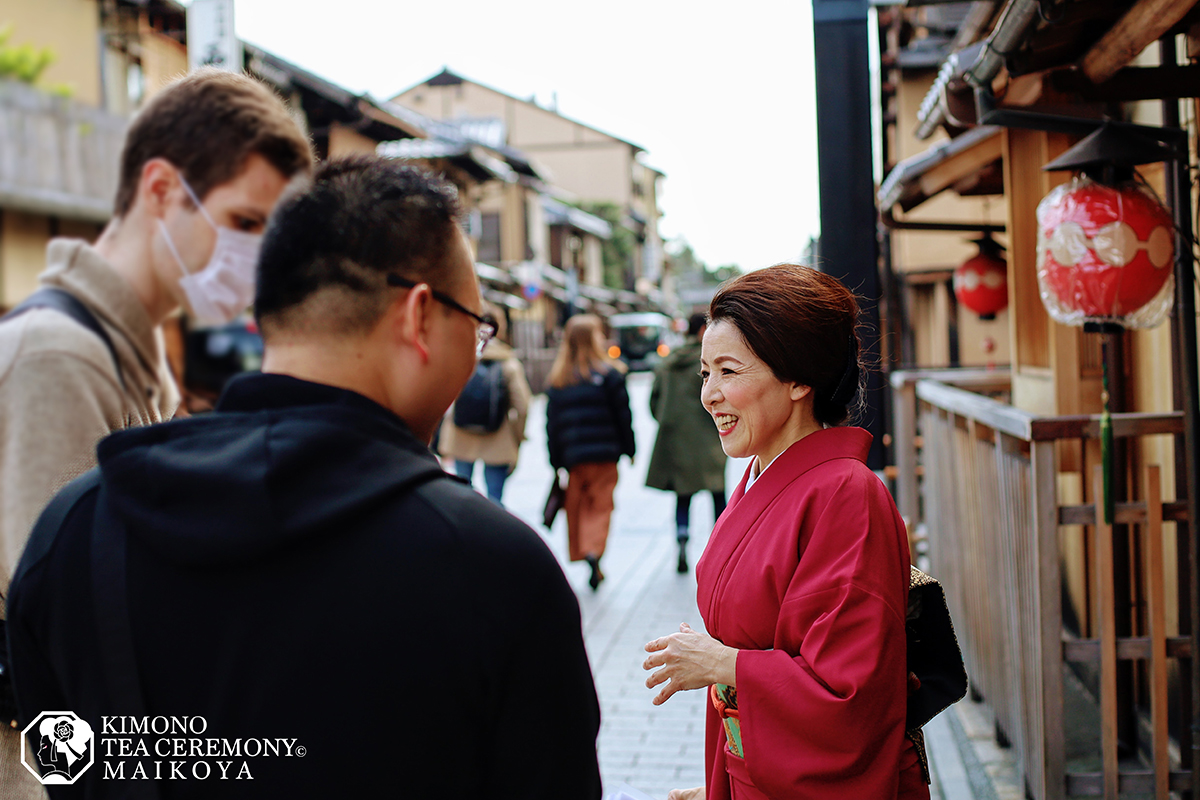
SADOOが祇園で開催するウォーキングツアーでは、祇園の文化や歴史、隠れたスポットについて学び、楽しむことができます。ツアー中に毎回舞妓さんや芸者さんに会えるわけではありませんが、英語が話せる地元のツアーガイドが祇園の歴史的建造物を紹介し、舞妓さんや芸者さんに会えるお店などもご案内します。

京都の芸者の歴史と文化に関する多くの展示や美術工芸品、解説があるミュージアムです。約30分間のガイド付きツアーもあり、芸者が使用する楽器やヘアアクセサリー、着物などを見学できます。舞妓と芸妓の違いや、見習いから舞妓、そして芸妓になるまでの修行についても、シンプルでわかりやすく解説されています。英語での説明もあるため、海外の方にもおすすめです。さまざまなショーや芸者体験も行っています。
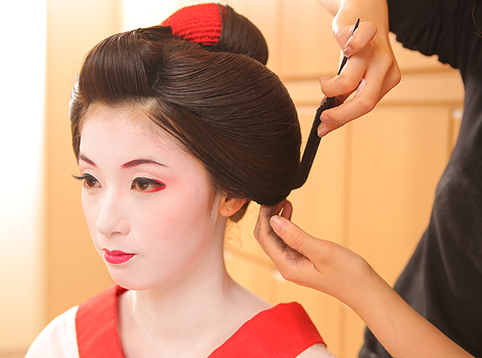
熟練したスタッフの手で、本物さながらのメイクやヘアセット、着付けをし、あなたを美しい舞妓に変身させます。本格的な和室やお庭などでカメラマンが撮影した写真は、当日のうちに素敵なオリジナル写真集となって受け取ることができます。芸者・舞妓変身スタジオは、清水寺や祇園の花見小路から徒歩圏内、旅行者に人気の「二寧坂」にあります。

京都には5つの花街があり、その中でも最も有名なのが祇園甲部で、一見さんお断りのお茶屋が立ち並ぶエリアです。多くの観光客が京都旅行中に、祇園甲部の歴史的な通りや花見小路を訪れます。ここには、芸者(舞妓・芸妓)の置屋やお茶屋、歴史的な寺院などが点在しています。
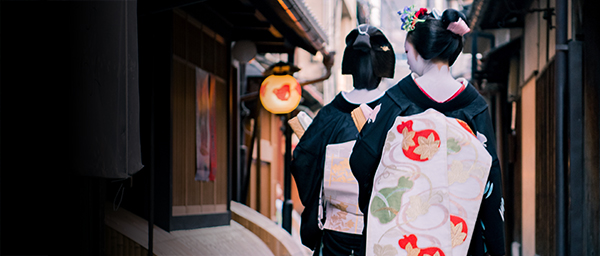
祇園での観光客のマナー違反が時折問題となっています。
芸舞妓さんのプライバシーを尊重しましょう。近づきすぎると、祇園の狭い通りで自分自身や芸舞妓さんを危険にさらす恐れがあります。通りを歩いている芸舞妓さんは、仕事に向かう途中であることが多く、時間に遅れるわけにはいきません。また、彼女たちに同行しているお客様のプライバシーも守る必要があります。
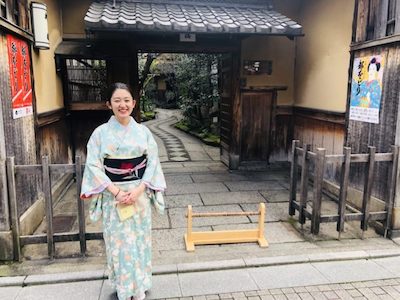
Gion is the most prestigious geisha district in Japan which was established during the Edo period in the 17th century.The area is right in front of Yasaka shrine since the shrine’s pilgrims needed an entertainment area where they could take a rest, drink, eat, relax, and prepare for the journey back home. In 1871, Yasaka Shrine, which used to be called the Gion Shrine, was recognized as the kanpei-taisha (the highest ranking government supported shrine). Afterwards, a number of tea houses near the shrine were built and many geisha started serving tea to visitors. During the Meiji period, there would be over 700 teahouses and over 3000 geiko and maiko inside Gion. In 1881 Gion was separated into two parts, Gion Kobu (The Western side of the Hanamikoji Street) and Gion Higashi (The Eastern side of the Hanamikoji Street).
Today, Gion Kobu is home to about 70 geiko and 30 maiko, who work across 60 teahouses. The map below highlights the southern side of Gion Kobu, also known as Gion Minamigawa, which is the area most frequently visited by tourists. This part of Gion is particularly popular, as it houses the Kenninji Temple with its Zen gardens and Kyoto’s oldest geisha house, Ichiriki Chaya. On the other side of Shijo Street lies Gion Shirakawa, often referred to as the most beautiful street in Kyoto. Geiko and maiko in Gion Kobu study the Inoue school of dance, which is influenced by Noh theatre. Every April, they perform the Miyako Odori on stage. The crest of Gion Kobu symbolizes a dango (sweet rice cakes) skewer with the character 'Ko' inside.
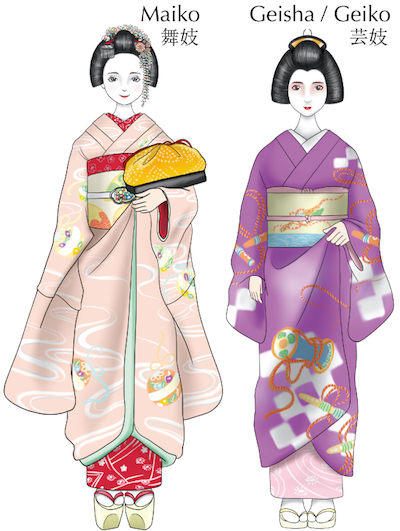
The main differences between maiko and geisha (geiko) are age, appearance and skills.
A maiko is typically under 20 years old, wearing more colorful kimonos with a red collar and generally has less developed conversation skills. The term "maiko" means "dancing child," referring to apprentice geisha who are still in training. Maiko are required to live in the geisha lodging house (okiya) with their mentor, the "okamisan," for five years. During this apprenticeship, maiko are not permitted to have a cell phone, carry money, or have a boyfriend.
Sadoo and Geisha (Geiko)
Maiko are the colorful and vibrant apprentices of the geisha world. Their eye-catching outfits are designed to divert attention from their limited knowledge and experience. In contrast, geisha wear more mature and subtle attire. Maiko must live in the "mother's" house (okiya) and rely on the small stipend provided by the geisha house, while geisha are more independent and often live in their own homes within the geisha neighborhoods. You can easily distinguish between geisha and maiko by their outfits and appearance, as shown in the image below.
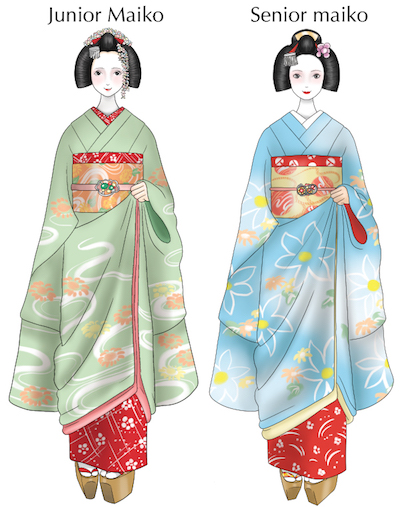
Most women enter the geisha profession at the young age of 15, as compulsory education in Japan only extends through middle school. Once they decide to pursue this path, they can be introduced to the proprietress of an okiya by someone they know, apply through the geisha union of a specific district, or contact an okiya directly. With the rise of the internet, many okiya have created websites to showcase the glamorous lives of geisha and maiko, allowing young women to apply directly. The prospective maiko will then be interviewed by the proprietress to assess her commitment to this profession. If accepted, she will move into the okiya and begin her training.
When young women join the profession, they are known as Shikomi (仕込み), which means "In Training." This initial stage of training typically lasts about a year. During this time, they take lessons in dance and music, learn how to wear a kimono properly, and practice speaking in the special Kyoto dialect known as Kyo Ben (京弁). Once her teachers believe she is ready to enter the profession, she will take an exam. If she passes, a date will be set for her official debut.
About a month before her official debut, she will start attending parties wearing the heavy kimono and makeup that are iconic symbols of the profession. However, instead of directly entertaining guests, she will observe her seniors and learn from their example. This stage is called Minarai (見習い), which means "Learning by Observation."
After completing this period, she will make her debut in a special ceremony known as Misedashi (見世出し), which means "Open for Business." From this day onward, she will be a Maiko (舞妓), meaning "Woman of Dance," and will begin an apprenticeship that typically lasts about five years. Unlike geisha, maiko are still untrained in the art of conversation and other formal arts, so their title reflects their primary focus on dance.
Towards the end of their apprenticeship, a maiko enters a stage known as Sakkō (先笄), named after the distinctive sakkō hairstyle they wear during this period, which lasts approximately 2-4 weeks. The sakkō hairstyle serves as a symbol that their apprenticeship is nearing its end and that they will soon become geisha. During this time, they will perform a special dance called Kurokami (黒髪), meaning "Black Hair," which represents their transition into womanhood. On the final day of their apprenticeship, the maiko will participate in a special ceremony known as Danpatsu Shiki (断髪式), where fellow maiko, geisha, and loyal customers take turns cutting the wires that held her elaborate hairstyle in place. Once her hair is freed, she is no longer a maiko.
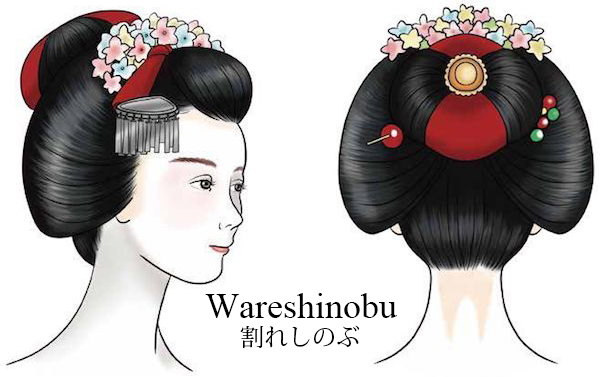
The hairstyles worn by maiko are the same as those worn by girls of their age during the Edo Period and are used to signify seniority and rank. All maiko hairstyles include a red piece of cloth tied at the front, called a Chinkoro (ちんころ), which symbolizes their childhood and immaturity. The first hairstyle a maiko wears is called Wareshinobu (割れしのぶ), characterized by its iconic bun with a red cloth threaded through it to match the chinkoro. A special hair ornament known as a Kanokodome (鹿の子留め) is placed in the center of this bun, showcasing opulence.
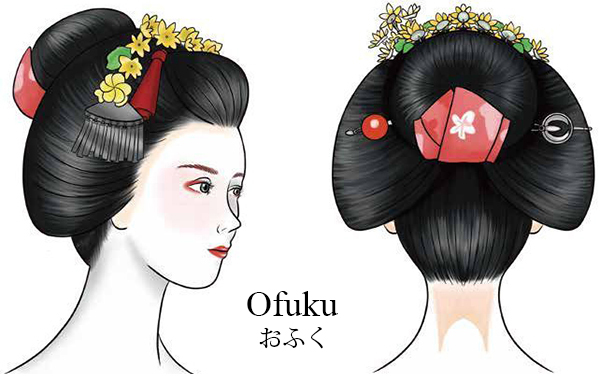
After 2 to 3 years, a maiko will transition to the Ofuku (おふく) hairstyle, which is distinguished by a triangular piece of cloth, called a Tegara (手柄), pinned into the back of her hair. Initially, the tegara is red, but it gradually shifts to more muted colors like pink or pastel blue, indicating her status as a senior maiko. She will continue to wear this style until her sakkō period. During special formal occasions, senior maiko may also adopt additional hairstyles. The Yakko Shimada (奴島田) features a high bun with a cloth tied underneath and a string of beads on top, worn for New Year’s visits in January. The Katsuyama (勝山) style, showcasing a tubular shape with a cloth tied underneath and two special hair ornaments known as Bonten (梵天) on either side, is worn during the Gion Festival (祇園祭) in July.
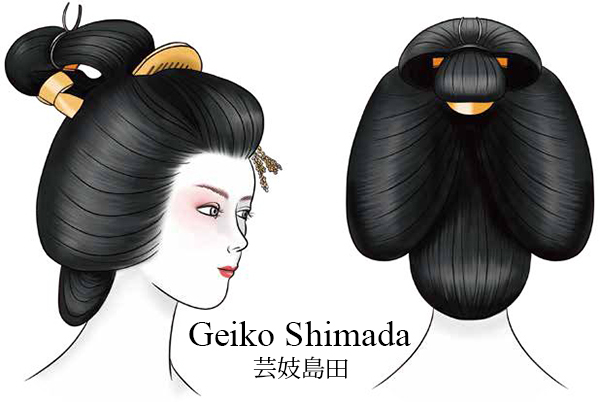
Finally, at the end of her apprenticeship, a maiko will wear the Sakkō (先笄) hairstyle. This style is distinguished by an array of tortoiseshell hair ornaments, silver wires that resemble dragonfly wings, and a tuft of hair that hangs down at the back.
A maiko uses her own hair for these elaborate styles and visits a special hairstylist once a week to have it reset. During this time, she must sleep on a special pillow called a Takamakura (高枕), designed to keep her hair from unraveling. Traditionally, the okaasan of an okiya would sprinkle rice or bran around the takamakura of a new maiko to ensure she was using it correctly. If the maiko rolled off the pillow, her hair would become covered in grains, forcing her to visit the hairstylist to have the style redone. In contrast, geisha, due to their seniority, wear wigs called Katsura (かつら) when entertaining. This practice began after World War II when there was a shortage of hairstylists who could manage both geisha and maiko hair. A geisha's wig is styled in the Geiko Shimada (芸妓島田) style, named after the term for geisha in western Japan. The wig is maintained by a specialist who restyles it once a month to keep it fresh. Because geisha use wigs, they no longer need to sleep on a takamakura like maiko.